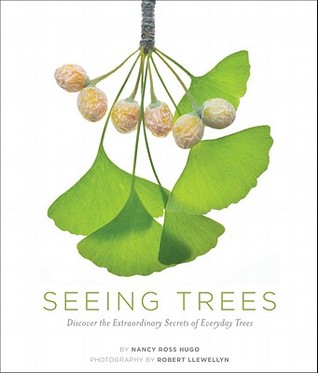 Have you ever considered being a tree watcher? People watch birds so why not trees? Nancy Ross Hugo’s book, Seeing Trees, will give you all the information needed to spark your interest in this fascinating activity. After reading it you will never see trees the same way again. Hugo introduces you to all sorts of intimate details about trees that you have probably never noticed but that will amaze and delight you. Hugo’s stated aim is to get people outdoors to look at the various parts of trees up close and observe the detailed features that make each kind of tree unique; her book does this in spades!
Have you ever considered being a tree watcher? People watch birds so why not trees? Nancy Ross Hugo’s book, Seeing Trees, will give you all the information needed to spark your interest in this fascinating activity. After reading it you will never see trees the same way again. Hugo introduces you to all sorts of intimate details about trees that you have probably never noticed but that will amaze and delight you. Hugo’s stated aim is to get people outdoors to look at the various parts of trees up close and observe the detailed features that make each kind of tree unique; her book does this in spades!
After a brief introduction to the topic and a discussion of viewing strategies, Hugo follows two different approaches to the subject. The first discusses in detail various tree traits while the second describes the author’s own process of discovery as she watched ten tree species over time. In the section on tree traits we learn the basics of tree watching as the author describes the characteristics of leaves, flowers, cones, fruit, buds, leaf scars, bark, and twig structure. We learn about the great variation in the leaf shape of a single species, that some trees have male and female flowers that may occur on the same or different trees, and why the gumballs of the sweetgum trees are considered to be engineering masterpieces. Hugo encourages the readers to watch the ways the leaves from different trees fall to the ground and to appreciate the work of insects when they skeletonize a leaf. She points out the beauty of the deep furrows and interlacing ridges of old black locust bark, the shaggy bark of river birch, and the sinewy steel gray bark of ironwood.
In the second section Hugo shares her personal thoughts, feelings, and observations in regard to ten trees: American beech, American sycamore, black walnut, eastern red cedar, ginkgo, red maple, southern magnolia, tulip poplar, white oak, and white pine. Here we learn about the multi-layered nuts of black walnut, the exfoliating bark of American sycamore, and the development of southern magnolia cones. Hugo explains the unique reproductive characteristics of the ginkgo tree and why it is considered a living fossil, and describes the flower-like female cones of white pine, pointing out that they are so inaccessible few people have ever seen them. Page after page contains detailed information that leads readers to a greater and greater appreciation for the trees that grow all around them.
The book is written in a very personal, conversational style that exudes the enthusiasm the author feels for her subject matter. Unique color photographs of tree parts highlight the text and bring a whole new world of visual experiences to the reader. Anyone with even the slightest interest in trees would appreciate this fine book and, in fact, those without any interest in trees might find a new interest after being exposured to it.